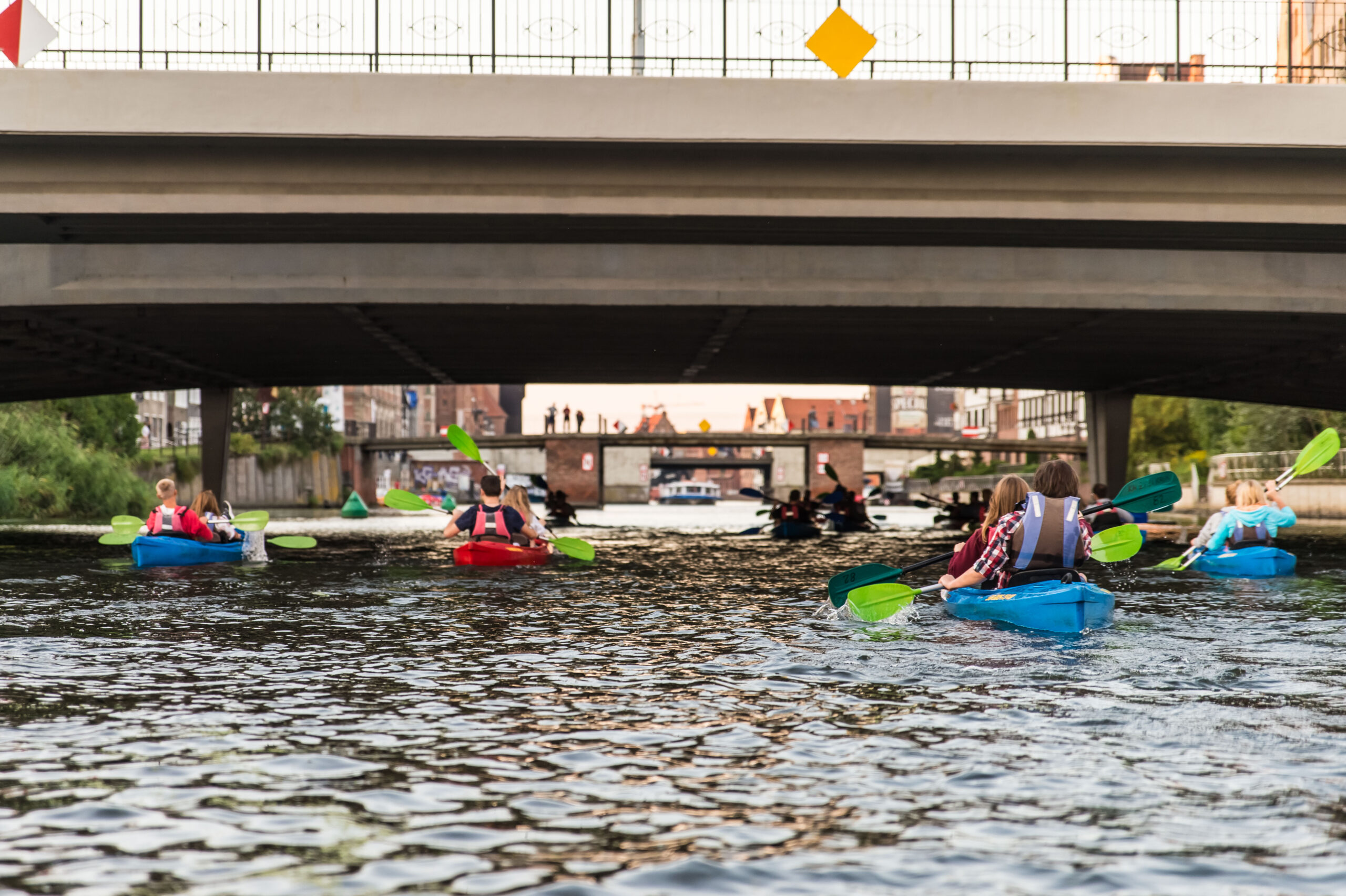
1. Monuments of the Old and New Town in Gdańsk
2. Kamienna Grodza
3. Opływ Motławy
4. Wisła Śmiała
5. Sobieszewska Island
6. Przegalina
1. Kamienna Grodza – A historical hydrotechnical construction from the beginning of the 17th century. It was used to direct the waters of Motława into moats surrounding the city, allowing to cover their foregrounds in case of a siege. It also protected Żuławy against backflows.
2. Opływ Motławy – An urban moat surrounding a ring of ground fortifications from the 17th century. Two initial bastions have been preserved, which great green barrows tower over the city’s landscape. A value of this trail consists in the nature – vast cane, yellow water-lily, white water-lily, and popular nenuphar fields. Ducks, coots, and swans also live and nest on these areas.
3. Wisła Śmiała – A distributary created in the course of a flood which took place during the springtime thaw of 1840. An ice floe blockade prevented the flow of water due to which Wisła broke through the seaside dunes in their lowest part. This resulted in separating the Górki village into its eastern and western parts. Today Wisła Śmiała includes multiple sailing clubs and the Ptasi Raj nature reserve which is the home of waterfowls and Baltic seals.
4. Sobieszewska Island – A fragment of the Wisła Spit surrounded by the waters of Wisła. In administrative terms it constitutes a district of Gdańsk. The island is partially forested and partially used for agricultural purposes. It includes many recreation centers and tourist quarters, and the local beach is beautiful and very wide. It is also possible to find amber there.
5. Przegalina – A lock which in the 19th century cut off the waters of Martwa Wisła from the river’s main flow after reconstructing the Przekop Wisły. This limited the risk of Gdańsk being flooded by the waters of Wisła. Constructing the Przekop also significantly changed the hydrographic layout of Żuławy and had an impact on creating the Sobieszowska Island.
Gdańsk is a city which can be explored from a kayak. Kayaking across its historical part constitutes a great experience because the monuments seen from water take on a completely new image. In the center of Gdańsk, river Motława branches off into multiple distributaries and canals. The granaries on Ołowianka, Żuraw, Baltic Philharmonic, or water gates are just some of the attractions which can be found on the trail.
It is best to begin the trip at Żabi Kruk or the Szpicgat club where a kayak rental spot is located. The trail goes through Stara and Nowa Motława, around the Spichrzów Island, and then – from the famous Żuraw – through the connected distributaries of Motława towards Polski Hak. There one has to turn right into Martwa Wisła. Note, that this constitutes the beginning of harbour waters – high ship traffic. Then after circa one kilometer it is necessary to enter the Opływ Motławy and go through the usually closed flood prevention gate (kayak portage across the street). The following trail constitutes a pleasant moat meandering across green areas along old fortifications full of waterfowls. It leads kayakers back to Motława near Kamienna Grodza. Going across it constitutes the last stage of the trip which will consist in just about 8 km of paddling.
The second possibility, for the perseverant ones, consists in a long-distance option – kayaking down Martwa Wisła to Przegalina or Błotnik. This reservoir resembles rather a large lake than a river. There it is necessary to look out for waves and ship traffic. Choosing this option one should go east and not turn into Opływ Motławy after Polski Hak. Going further we pass the refinery, river dockyards, and reach Wisła Śmiała with its marinas and harbors. The next stage consists in the Sobieszów bridge, located on even greater waters. Kayaking alongside the Sobieszowska Island it is possible to reach the lock in Przegalina or harbour in Błotnik.